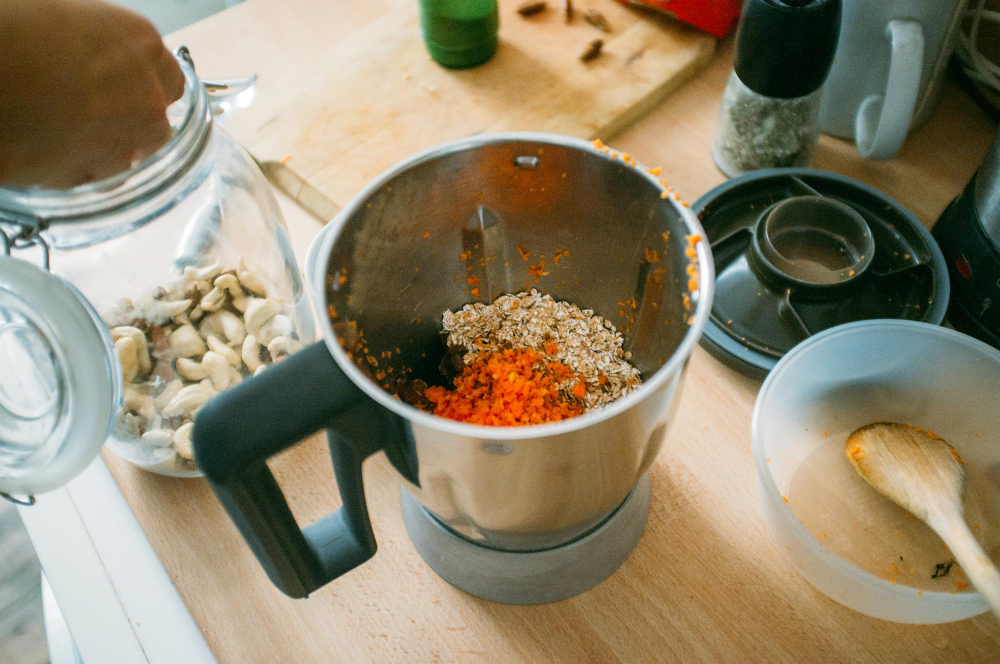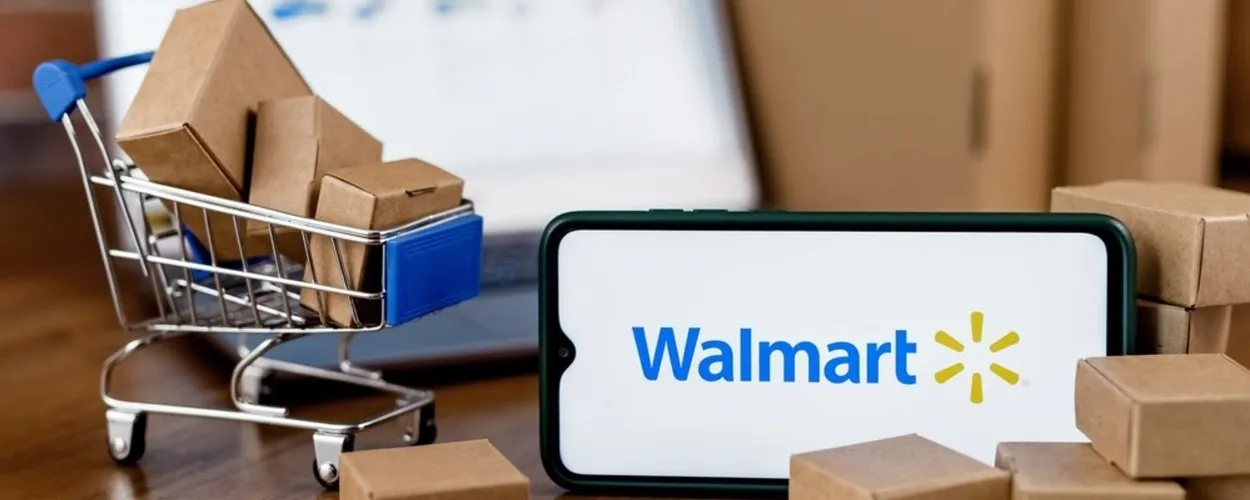3 December 2024
How to Sell Seasoning on Walmart An Extensive Guide
- 3 December 2024
By ZestyHut. Posted on October 17, 2024
Today, with an increasing demand for unique and organic seasonings, and with a thriving spice and seasoning market valued at 21.69 billion USD1 in 2023, this is an ideal time to enter the spice business.
However, success in the seasoning business requires more than a passion for flavor—it demands careful planning, an understanding of the market, legal considerations, and effective seasoning business strategies. This guide will walk you through everything you need to know—from market research and finding a gap in the market to brand building, and from legal compliance to creating your spice blends.
What is a Seasoning Business?
A seasoning business deals with sourcing, blending, packaging, and selling spices and herbs either as individual ingredients or as custom blends to consumers, retailers, food service industries such as restaurants, and food manufacturers, or wellness companies for health purposes. The seasoning business can range from small, home-based operations to large-scale enterprises that distribute products worldwide.
There are different types of seasoning businesses:
1. Pure Spice Selling
This includes sourcing raw and unblended spices like cinnamon, turmeric, and black pepper from many parts of the world and packaging them for resale.
2. Herbs and Dried Botanicals
Herbs like thyme, oregano, and sage are used for both culinary and medicinal purposes.
3. Custom Spice Blends
This kind of spice business includes combining multiple spices for a specific culinary purpose or ethnic spice mixes and selling them as unique products. Examples are creating blends such as barbecue rubs, curry powders, and taco seasonings.
4. Health-conscious or Specialty Blends
This seasoning business niche is about organic, gluten-free, salt-free, or low-sodium spice mixes to meet specific dietary needs and attract health-conscious customers.
— No matter if you want to sell online, supply to local restaurants and grocery chains, or wellness companies — the possibilities are endless. But, to be successful in the business, you need to provide high-quality products and provide something different—whether it’s a unique blend, a focus on sustainability, or premium packaging— to stand out in the spice-crowded market.
Understanding The Spice Market

Over the last decade, several factors have contributed to the growing demand for spices and seasonings, presenting significant opportunities for spice businesses like yours.
These factors include:
1. Health-Consciousness Trends
Consumers are becoming more health-conscious and turning to natural, thus driving companies to produce minimally processed ingredients that are low-sodium, free from artificial additives and preservatives as part of a healthy lifestyle. One of the most avoided components these days is Monosodium glutamate (MSG), so it is a good competition point for your seasoning business to produce spices that are free from these substances and of high quality.
2. Globalization of Cuisines
With access to global cuisines becoming more widespread, especially through social media, cooking shows, blogs, and food delivery services, today’s consumers are more adventurous and open to exploring global flavors. From Indian Garam Masala to Ethiopian Berbere, exotic and international spices are increasingly in demand, and today, it’s not unusual to find Middle Eastern Sumac or North African ras el hanout in mainstream grocery stores. This gives spice businesses the chance to introduce lesser-known spices to new audiences.
3. Home Cooking Movement
The rise in cooking shows, food bloggers, social media platforms like Instagram and TikTok, and home-delivery meal kits has inspired more people to cook at home. Many of these consumers want access to high-quality, premium spices to replicate restaurant-level dishes in their own kitchens.
4. Sustainable and Ethical Sourcing
People now are more concerned about where their food comes from, and this includes spices. Organic, fair-trade, and sustainably sourced spices are growing in popularity. If your spice business can meet this demand, you’ll be able to attract customers who care about the environmental and social impact of their purchases.
5. Demand for Convenience
Pre-blended seasonings offer convenience for busy consumers who want to replicate specific cuisines without needing to purchase and mix multiple individual spices.
— These trends are not fleeting; they represent ongoing changes in consumer behavior. Understanding these shifts will allow you to craft products that resonate with modern consumers and ensure your seasoning business stays relevant in the long term. For example, capitalizing on the demand for organic or sustainably sourced spices could set you apart from competitors.
The Cost of Starting a Seasoning Business
The cost to set up a spice business can vary dramatically depending on the scale and goal of your business. First, you need to purchase raw spices, grinders, and packaging materials, which cost anywhere from a few hundred to a few thousand dollars. Other costs include renting or buying a space to do production, obtaining the necessary licenses, and setting up a website, or an e-commerce platform. You need also to add some budget concerning your marketing such as social media campaigns and branding. If you are starting with a small home-based seasoning business, it might start with about $2,000 to $5,000 but it could go up to $20,000 or more to set up a large commercial operation.
Get to Know More About: How Much Is The Cost of Starting Spice Business in USA?
Legal and Financial Procedures

Just like any other business, starting a spice company takes some legal and financial consideration. Failure to comply with regulations could lead to fines or worse business closure. The process entails complying with food safety regulations, getting the correct licenses, and setting up your finances. We’ll go over some of the legal and financial things you’ll have to do with your spice business:
1. Register Your Spice Business
The first thing you will need to do is to choose a business structure. Will you run a sole proprietorship, an LLC, or a corporation? The choice of one or another structure has legal and tax implications and it is advisable to have a legal expert or accountant advise to choose the best option for your business.
2. Licenses and Permits
Aside from registering your seasoning business, you must apply for permits to produce and sell food products. For example in the United States, you will be working with the FDA (Food and Drug Administration), to check that your products meet the safety standards, and ensure that your facility complies with local health department regulations. Be prepared to label your spices correctly with ingredient lists, net weight, and allergy warnings in accordance with national or local food labeling laws.
3. Insurance
Don’t forget about insurance. It is essential for food businesses to operate with product liability insurance, which helps cover you in case of contamination, product recalls, or consumer complaints.
4. Financial Management (Tax and Accounting)
After setting up your spice business legally, you will focus on financial management. To do so, you will need to open a separate business bank account, set up accounting software to track your expenses and revenue, and know your tax obligations. You may also want to consult with an accountant or financial advisor about that.
5. Trademark and Intellectual Property
If you’re making a unique spice blend you’ll want to trademark your brand and recipe to protect your intellectual property.
— When your legal and financial foundation is in place, you will prevent future headaches, and you’ll be able to focus on growing your business.
Identifying The Essential Tools and Equipment You Need
If you want to run a successful seasoning business then you need to have some key equipment to ensure quality and efficiency. Having a good spice grinder is essential for grinding whole spices into powders, and precision scales are important to ensure your recipes stay consistent. Sifters can ensure smooth, even textures, and airtight containers keep your spices fresh during storage. To give a professional presentation, packaging machines are essential, and a label printer is also helpful for branding and ingredient transparency. Automated sealing and labeling machines can be valuable time savers for larger spice businesses.
Starting off on the right foot with the right tools can speed up your seasoning business growth and keep the quality of your blends up.
Read This Article to Know Exactly What Are The Essential Spice Business Equipment You Need to Succeed
Spice Business Names and Brand Identity

Your business name and brand identity are crucial elements that will influence how consumers perceive your spice business. A memorable name should reflect the core values of your business and appeal to your target market. When brainstorming your spice business name, consider the following:
1. Brand Name
Your seasoning business name should reflect your brand’s personality, whether it’s modern and minimalist, exotic and adventurous, or traditional and homey. For instance, if you’re focused on organic or sustainably sourced spices, you might choose a name that evokes purity or nature. If you’re offering international or exotic blends, consider a spice business name that hints at the global origins of your products. If you focus on premium, high-end products, you want the name to exude luxury, and so on.
2. Simplicity and Memorability
So choose a name that is easy to pronounce, spell, and remember. Short, catchy names will stay longer in the minds of the customers.
3. Convey Flavor Or Origin
The use of words that mirror your seasoning business essence, such as words like “Spice,” “Flavor,” “Season,” or even specific cultural references, allows a customer to immediately communicate what you offer.
4. Consistency with Brand Identity
In fact, your brand identity is not just about the name of your brand. Your brand identity includes also your logo, packaging, website design, and even your product descriptions. How do you want your customers to feel when they see your seasoning business brand? Are you the kind of brand that you want to be perceived as a luxury, artisanal? Or would you like to deal with affordability and convenience? Your branding should communicate this clearly. The colors, fonts, and imagery you choose for your brand will communicate your message to customers before they even try your product.
— Your brand identity should also align with your target audience. If your customers are health-conscious, using earthy tones, eco-friendly packaging, and simple, clean design elements might appeal to them. If your focus is on international flavors, vibrant colors, and exotic imagery could help communicate the global appeal of your spice business products.
How to Find a Gap in The Market and Capitalize on It

Although the spice market is competitive, there have to be gaps in the market to be carved out. In the spice industry, this could mean identifying opportunities to fulfill a customer need that is not being met, offering a product that is currently underserved, or introducing a unique twist on a traditional product.
To identify gaps, you must conduct a thorough market research by considering the following steps:
1. Research Competitors
To find a gap, start by analyzing your competitors. Look into their product offerings, prices, and customer reviews. Know their strengths and weaknesses. What are customers looking for and aren’t getting? Maybe there’s a lack of high-quality organic spice blends or there are missing ethnic spices that are hard to find in customer’s area. It might just be that consumers are looking for eco-friendly packaging or health-conscious seasoning options such as low-sodium or gluten-free blends.
2. Consumer Feedback
Ask your target audience what they prefer through surveys or engaging with them through social media to understand their preferences. Notice any unsatisfied needs or frustrations they express with existing products. Once you’ve found a gap, get your spice business to tailor products to meet that specific demand.
3. Trends
Furthermore, your seasoning business can capitalize on trends, such as the increasing interest in sustainable packaging or the growing preference for plant-based diets. Take, for instance, the idea of creating spice blends that would work for specific diets such as vegan, keto, or gluten-free diets, for example, to make your business stand out.
— Finding a niche or gap in the market will help you position your spice business and can help you customize your product offerings to a certain customer base, which means less competition and more brand loyalty.
To name some examples, if you find there is a rising need for spices in health-conscious cooking, you may develop a line of blends, especially for healthy diets, or if you discover that customers are interested in international flavors, for instance, you might consider introducing blends inspired by global cuisines that are not easily accessible in your market, and so on of endless opportunities your seasoning business could capitalize on to succeed in the spice market.
Building Strategies for Your Spices Business
To develop a successful spice business it is important to create thoughtful spice business strategies with respect to marketing, branding, and customer engagement. Begin by knowing who your target market is: home cooks? Gourmet enthusiasts? Restaurants? Design a unique brand identity for your products. A well-designed website, and an effective presence on social media, can attract customers. You can also increase your visibility by working with food bloggers or doing cooking demos. Other ways to keep customers engaged and boost loyalty are by offering sample packs or subscription boxes and turning one-time buyers into regular clients. Moreover, by building up strong relationships with your suppliers, you don’t only ensure quality, but also good pricing for your ingredients.
Read This Comprehensive Article For More Detailed Information: 5 Effective Spice Business Strategies for Long-Term Success
Create Your Own Spice Blend

One way to differentiate your seasoning business is by creating your own unique spice blends. By creating a signature blend, you can make it your brand’s standout product, thus helping you create customer loyalty. Here’s how you can start creating your own blend:
1. Experimentation
Begin with choosing a base spice that will be the backbone of your spice blend. Next, experiment with complementary spices to enrich the blended flavor. You need to strike a balance between the flavors, and making sure that no one spice dominates others. A good blend has the balance of base spices (like cumin or coriander), heat (like chili powder or cayenne), sweetness (like cinnamon), and savory flavor (like garlic or onion powder).
2. Sourcing Quality Ingredients
The better the quality of your ingredients, the better the flavor of your spice blend will be. Pick your spices fresh and high-quality from trusted suppliers.
3. Testing
When you’ve developed your own special blend that you’re happy with, it’s time to test your blend with different dishes and adjust the ratios of each spice until you reach the perfect balance. Also, be aware that spices have their own unique personalities, as some may overpower others if used in large quantities. Don’t hesitate to gather feedback from friends, family, or even potential customers.
4. Packaging and Branding
After you have perfected your spice blend, give it a creative name and ensure it looks great with good branded packaging to keep it always looking attractive. A successful spice blend could become the signature product that defines your spice business.
— ZestyHut is the perfect partner for any size business -whether you’re a small startup, a medium-sized company, or a large-scale operation- we offer a customized service to help build your own amazing spice blends in our creative spice lab.
ZestyHut has the expertise to create distinct, creative blends that set you apart. Our spice recipes give you precise, accurate spice quantities alongside detailed instructions, tailored to your production scale, ensuring that different amounts from bulk quantities to even small batches maintain flavor consistency.
Conclusion
Starting a successful spice business is all about passion, strategy, and market knowledge. From sourcing the best spices to creating a compelling brand, everything plays a significant role in conceiving a successful venture. If you pay attention to market trends and focus on delivering high-quality products, you can create a product line that customers appreciate. With patience, hard work, and excellent spice blends you can make your seasoning business a well-recognized name that brings aromatic and delicious experiences to customers around the world.
Sources:



